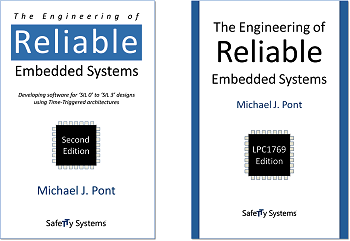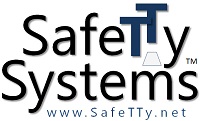Code examples based on TT technology from SafeTTy Systems

Various ‘Time-Triggered Reference Designs’ (TTRDs) can be downloaded from this website.
Used in conjunction with one of our ‘ERES’ books, these code examples are designed to illustrate ways in which TT software architectures can be used to support the development of a wide range of reliable embedded systems.

![]()
Conditions of use
These public TTRDs are primarily intended to be used during training courses delivered by SafeTTy Systems or by Microdevice Technologies (our Training Partner in India) or by Swift Act (our Training and Development Partner in Egypt).
The public TTRDs downloaded from this website may also be used without charge: [i] by universities and colleges in courses for which a degree up to and including “MSc” level (or equivalent) is awarded; [ii] in non-commercial projects carried out by individuals and hobbyists.
Use of these TTRDs in any form of commercial project (including training courses delivered by organisations other than SafeTTy Systems or Microdevice Technologies or Swift Act) or in university research projects (including PhD-level programmes and equivalent) requires purchase of an appropriate ReliabiliTTy® Technology Licence.
Please contact us if you have any questions about these licence arrangements.
ReliabiliTTy Technology Evaluation Licences
Many of our new customers purchase a low-cost ReliabiliTTy Technology Evaluation Licence (RTEL) package as a means of exploring our technology and developing their first TT design.
RTEL packages allow use of our technology – including our public TTRDs – in prototype designs.
Learn more about RTEL packages …
SafeTTy Solutions™packages
In commercial projects, most of our customers employ complete code platforms that are provided as part of a SafeTTy Solutions™ package.
As an example, the figure below gives an overview of a CorrelaTTor® TT platform (we pronounce it ‘correlator’).
![]()

![]()
In a CorrelaTTor platform, a single processor is employed with internal monitoring (using MoniTTor® and PredicTTor® components). For example, the combination of an ‘ASIL D’ microcontroller and CorrelaTTor software can provide a highly-effective means of meeting the requirements of ISO 26262 (up to ‘ASIL D’).
In order to demonstrate that a product is compliant with an international safety standard such as IEC 61508 or ISO 26262, organisations will typically work with an independent third-party assessor (such as exida®). In our experience, teams generally don’t like writing the extensive documentation that is required to support such a process (and often do this rather badly, leaving significant gaps that have to be addressed by expensive and time-consuming re-submissions).
To assist with this process, we provide extensive documentation for our CorrelaTTor platform: this amounts to around 1000-1200 pages, spread over 12 documents.
- customers using this platform typically follow the same structure (and re-use some of the contents) when documenting their product design for a third-party assessor;
- by providing document templates (and in many cases document contents), we have found that we can significantly reduce the time required by our customers to prepare a case for third-party assessment (by around 6 months per product in our experience).
Learn more about SafeTTy Solutions packages …
[This page was last updated: 2022-06-10] ![]()
![]()
TTRDs associated with ‘ERES2’
![]()
The TTRDs associated with the second edition of ‘The Engineering of Reliable Embedded Systems‘ can be downloaded here.
![]()
![]()
TTRDs associated with ‘ERES1’
![]()
The TTRDs associated with the first edition of ‘The Engineering of Reliable Embedded Systems‘ can be downloaded here.
![]()
![]()
